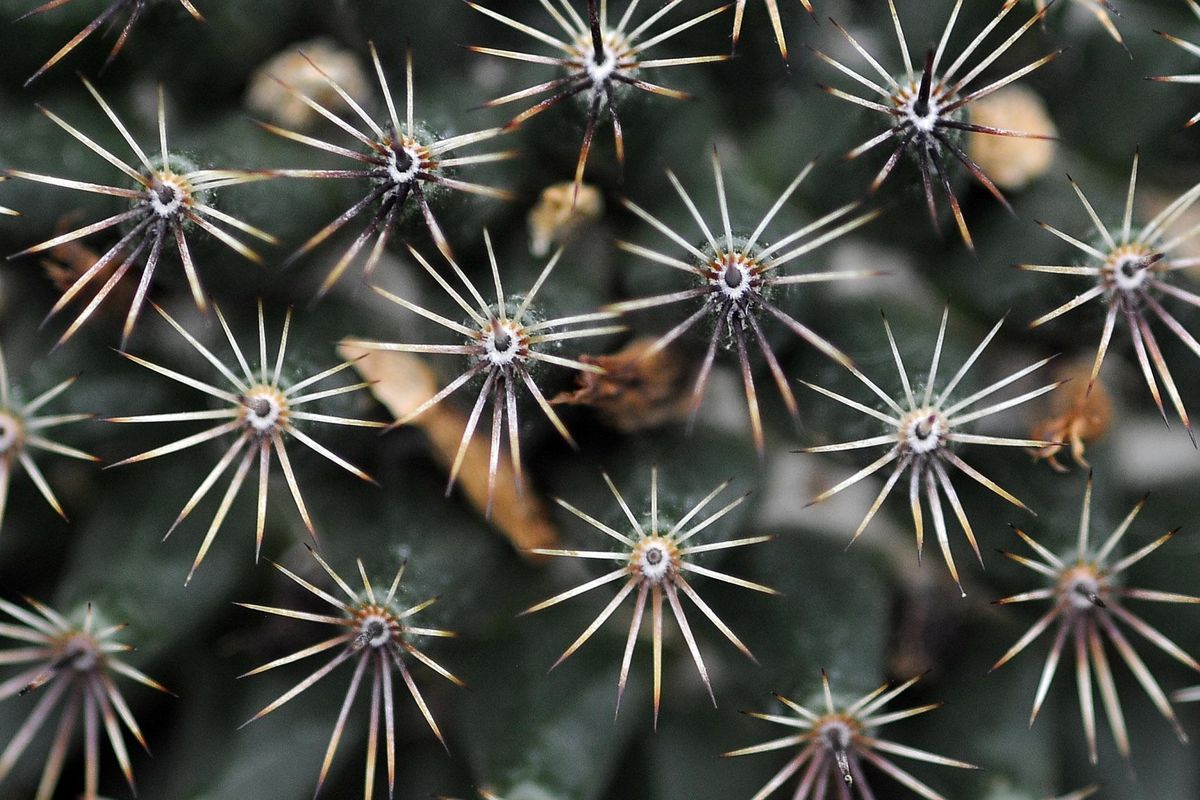Ask Dr. Universe: How do cacti survive in such hot and dry environments?

Q: How do cacti survive in such hot and dry environments? – Ravin, 11, London, England
Dear Ravin,
All plants need water to survive. Those that live in places where water is scarce use some interesting strategies to stay alive.
That’s what I found out from my friend Charles Cody, who manages one of the greenhouses at WSU. When I went to visit the greenhouse, he pointed out a few different cacti.
One was tall and cylindrical with big spines. Another was small and round with what looked more like little hairs. A rainforest cactus hung on the wall like a vine.
Cody explained that if we looked closely at a leaf of a plant we would find parts called stomata, which are kind of like little gates that let air and water in and out. Since cacti don’t have true leaves, their stomata are in the body, or stem, of the plant.
In most plants with leaves, the stomata open up during the day to take in a gas called carbon dioxide from the air. Plants can use this carbon dioxide plus sunlight and water to make their food. It’s a process called photosynthesis, and it helps plants get the energy they need to survive.
When the stomata are open, the plant also lets out oxygen – the oxygen we all breathe. But at the same time, the plant can also lose water. It evaporates in the sun. You might already know about evaporation if you’ve ever seen the water in a puddle seem to vanish on a sunny day, but stomata in the desert are a bit different.
Instead of stomata that open during the day, cacti have stomata that open at night. This helps them survive in extreme conditions. Cacti can still get the carbon dioxide they need to make their food without having their water supply zapped. They store up the carbon dioxide overnight and use it the next day to make their food.
Cody says cactus spines are actually a unique version of leaves. The spines provide a little shade to the cactus when they cast their shadow onto the stem. They can also collect dew, and when the dew drips to the ground, the roots take it into the cactus.
Spines also warn some desert critters to stay away and not eat the cactus. But sometimes if there is a long period of time without water, or drought, cacti like the prickly pear can offer a source of food to some desert critters.
Cacti can store a lot of water, too. When it rains a lot, the saguaro cactus takes in so much water it weighs up to about 4,800 pounds, or just a little less than a mini-van.
Life in the desert works out well for cacti, but I prefer life in the Pacific Northwest.
Sincerely,
Dr. Universe
Ask Dr. Universe is a project from Washington State University. Submit a question of your own at http://askDrUniverse. wsu.edu/ask.